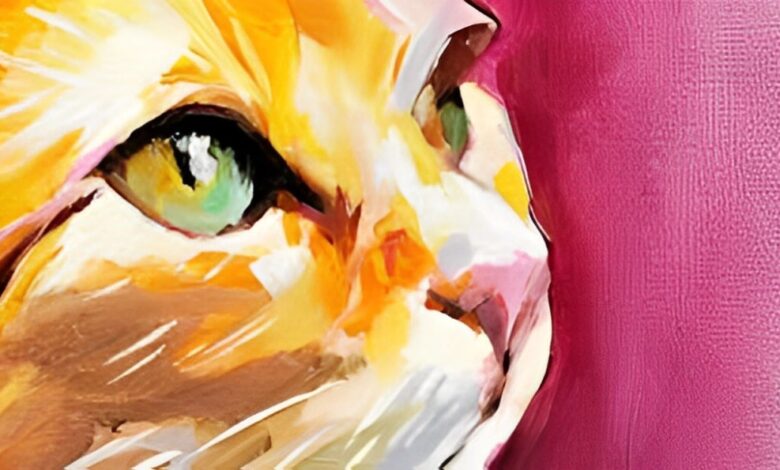Mastering the Art of Drawing:8mi9vnj1ccs= Cat

Table of Contents
- Introduction to Drawing:8mi9vnj1ccs= Cat
- Understanding the Basics of Drawing
- 2.1 Tools and Materials
- 2.2 Essential Techniques
- The Anatomy of Cats
- 3.1 Structure and Proportions
- 3.2 Unique Features of Cats
- Step-by-Step Guide to Drawing:8mi9vnj1ccs= Cat
- 4.1 Sketching the Outline
- 4.2 Adding Details
- 4.3 Shading and Texture
- Common Challenges and How to Overcome Them
- 5.1 Capturing Movement
- 5.2 Creating Realistic Fur
- Advanced Techniques for Drawing:8mi9vnj1ccs= Cat
- 6.1 Using Color Effectively
- 6.2 Experimenting with Styles
- Tips from Professional Artists
- Conclusion
1. Introduction to Drawing:8mi9vnj1ccs= Cat
drawing:8mi9vnj1ccs= cat can be a delightful yet challenging task for artists at any level. Whether you are a beginner or a seasoned illustrator, the ability to capture the essence of a cat can greatly enhance your artistic skills. In this comprehensive guide, we will explore the intricacies of drawing:8mi9vnj1ccs= cat, from basic techniques to advanced methods that can help you create stunning feline portraits.
2. Understanding the Basics of Drawing
2.1 Tools and Materials
Before diving into drawing:8mi9vnj1ccs= cat, it’s crucial to gather the right tools. Here’s a list of essential materials you’ll need:
- Pencils: A range of graphite pencils (H to B) for different shading effects.
- Erasers: Kneaded and rubber erasers for corrections and highlights.
- Paper: Quality drawing paper that can handle various media.
- Blending Tools: Stumps or tortillons for smooth shading.
- Reference Images: High-quality photographs of cats for accuracy.
2.2 Essential Techniques
Familiarize yourself with fundamental drawing techniques:
- Line Drawing: Practice creating clean, confident lines.
- Shading: Learn different shading techniques like hatching, cross-hatching, and stippling.
- Proportions: Understand the basic proportions of a cat’s body to maintain accuracy in your drawings.
3. The Anatomy of Cats
3.1 Structure and Proportions
To master drawing:8mi9vnj1ccs= cat, you must understand feline anatomy. Cats have a unique skeletal structure, which influences their posture and movement. Key aspects include:
- Head: The skull shape, facial features, and ear placement.
- Body: The length of the body in relation to the legs and tail.
- Legs and Paws: Understanding the positioning and structure of feline limbs.
3.2 Unique Features of Cats
Every cat has its own personality, reflected in its physical traits. Pay attention to:
- Fur Patterns: Different breeds have distinct patterns and textures.
- Eyes: Cats’ eyes are expressive; learning to capture their gaze can bring your drawings to life.
- Expressions: Study how cats convey emotions through body language and facial expressions.
4. Step-by-Step Guide to Drawing:8mi9vnj1ccs= Cat
4.1 Sketching the Outline
Start your drawing by lightly sketching the basic shapes. Here’s how to break it down:
- Basic Shapes: Begin with circles and ovals to represent the head and body.
- Guidelines: Draw light lines to indicate the position of the legs and tail.
- Refining the Outline: Gradually refine your sketch by adding details such as the ears and facial features.
4.2 Adding Details
Once you have a solid outline, start adding details:
- Facial Features: Focus on the eyes, nose, and mouth, ensuring they reflect the cat’s expression.
- Fur Texture: Use short, quick strokes to create the illusion of fur.
4.3 Shading and Texture
Shading is crucial for adding depth:
- Light Source: Determine where the light is coming from to create highlights and shadows.
- Layering: Build up layers of graphite for richer shadows, using blending tools for smooth transitions.
5. Common Challenges and How to Overcome Them
5.1 Capturing Movement
Cats are known for their agility. To depict movement effectively:
- Reference Photos: Use photos of cats in motion to understand their dynamic poses.
- Gesture Drawing: Practice quick sketches to capture the essence of movement.
5.2 Creating Realistic Fur
Fur can be tricky to draw realistically. Consider these tips:
- Directional Strokes: Follow the direction of the fur with your pencil strokes.
- Variety of Lines: Use a mix of long and short strokes to create a natural look.
6. Advanced Techniques for Drawing:8mi9vnj1ccs= Cat
6.1 Using Color Effectively
Adding color can elevate your drawings:
- Color Theory: Understand how colors work together to enhance realism.
- Layering Colors: Use colored pencils or watercolor to build depth and dimension.
6.2 Experimenting with Styles
Don’t be afraid to explore different artistic styles:
- Realism vs. Stylization: Try drawing in both realistic and cartoon styles to find your unique voice.
- Mixed Media: Combine various media like ink and watercolor for creative effects.
7. Tips from Professional Artists
Learning from experienced artists can provide invaluable insights. Here are some tips:
- Practice Regularly: Set aside time each day to sketch and refine your skills.
- Seek Feedback: Join art communities or classes to share your work and receive constructive criticism.
- Study the Masters: Analyze works from renowned artists to understand different techniques and styles.
8. Conclusion
Drawing:8mi9vnj1ccs= cat can be a rewarding endeavor that allows you to express your creativity and love for these fascinating creatures. By mastering the basics, understanding feline anatomy, and applying advanced techniques, you can create beautiful and lifelike representations of cats. Remember, practice is key—keep honing your skills, and you’ll see improvement over time. Happy drawing!
you may also read choicegazette.





